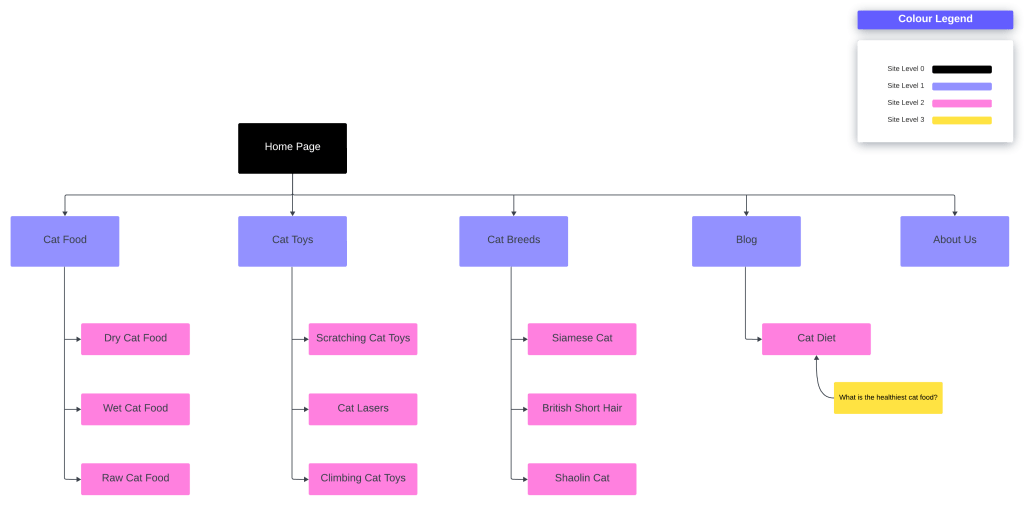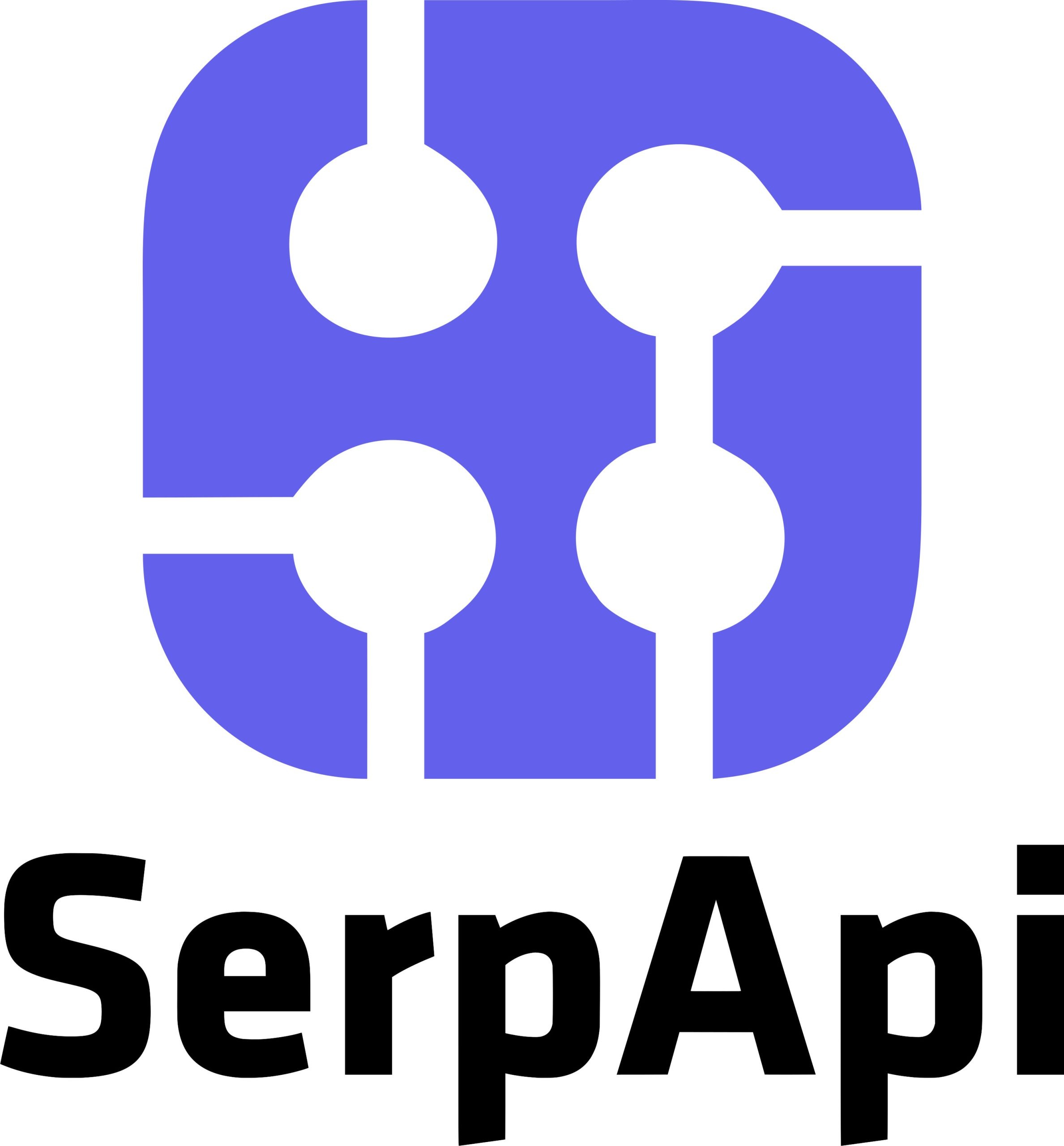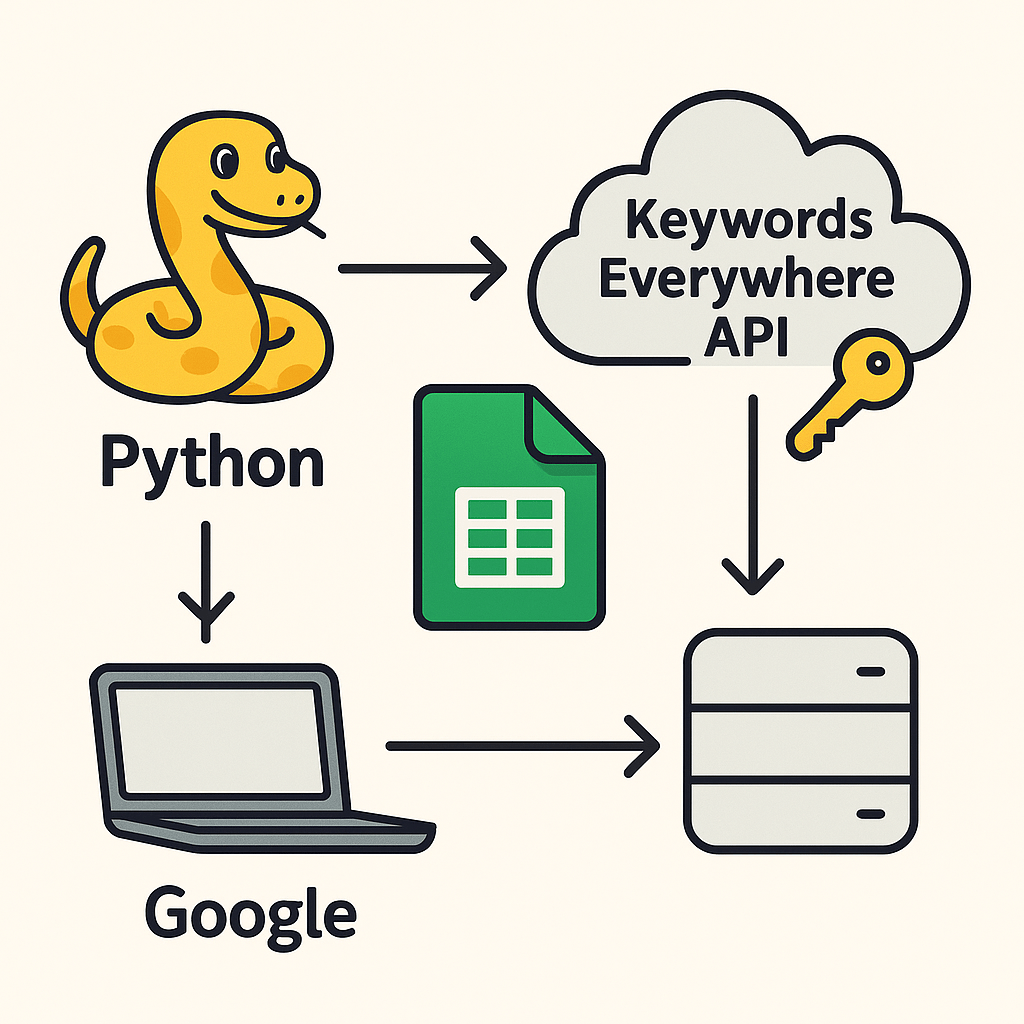Semantic SEO is about the contextual relevance of different terms relating to a given topic. It has become vital for businesses and marketers wanting to improve their visibility in organic search.
Table of Contents
It all starts with making sure your content targets the context around a specific keyword or topic. For example, say your target keyword is “cat food”. Rather than simply creating a page that lists cat food, you’d expand your content to cover the surrounding context.
You can either add answers to questions such as “What is the healthiest cat food in the UK?”, “How much wet food should I feed my kitten?” and “Can cats live on dry food alone?” on that page, or create a separate blog post. What I like to call supplemental content.
With Google relying on large language models such as BERT and MUM to parse meaning and intent in AI-driven search results, it’s more important than ever to maximise your supplemental content around target topics.
This article shows you how to leverage and execute a semantic SEO strategy to optimise your content more effectively and ensure it’s relevant for the people reading it.
What Is Semantic SEO?
Semantic SEO goes beyond traditional keyword-based strategies. It’s about understanding the intent behind keywords and delivering content that satisfies that intent in the most helpful manner.
Instead of merely targeting specific keywords, it focuses on the broader context and meaning of the terms users are searching for.
Expanding on the example above, an audience searching for “cat food” might be interested in answers for questions such as “What is the healthiest cat food?” or “Can cats live on dry food only?”.
If your website incorporates relevant subjects and questions around a certain. topic in a semantic way, the likelihood of achieving strong visibility for keywords that your target audiences may search for at different stages of their path to purchace is much higher.
Why Does Semantic SEO Matter?
With search engines like Google prioritising experience, websites must produce content that connects with audiences on a deeper level.
Semantic SEO helps improve relevance and enhances the likelihood of achieving greater visibility in search results.
When you craft content that resonates with user intent, you’re not just satisfying algorithms; you’re genuinely meeting the needs of audiences.
With the appearance of AI-driven features such as AI Overviews and AI Mode, it is important that your content resonates with target audiences at all stages of the funnel and incorporates content that serves different intents, such as navigational and informational, rather than purely transactional or commercially oriented queries.
What to Consider in a Semantic SEO Strategy
1. Understanding User Intent
Different types of searches reflect different intents for example, they can be informational, navigational, transactional, or commercial. Tailoring your content to meet these intents ensures that you address the needs of your audience at different stages of the funnel.
A good place to start here is to understand what type of content, webpages, and related queries (People Also Ask) Google is displaying for a keyword.
For example, you may find that AI overviews, wiki’s, social conversational hubs like reddit, publishers, or blogs, have greater visibility for informational keywords while ecommerce websites have greater visibility for transactional keywords.
Understanding the user intent can heavily inform how to shape the user experience (UX) layout of the page, and what type of content to write when you are planning to target a keyword.
2. Entity-Based Content
Entities are the things or concepts that words refer to, and recognising them allows search engines to gain more understanding of your content.
Publishing “entity-based content” helps search engines such as Google match user queries to the correct concept. Structured data available from Schema.org can help search engines, and LLM’s understand your content from an entity perspective.
Keywords are the exact words or phrases people type in search, whereas entities embody broader concepts and link to other related ideas.
For example, “Amazon” as a keyword could mean the Rain Forest, the ecommerce brand, or even a member of a legendary race of female warriors believed by the ancient Greeks. However, as an entity, the intended meaning becomes clear from it’s context.
Google Cloud Natural Language Processing API helps you understand what entities Google analyses in your content. Just copy and paste your content then click ‘Analyze’ in the ‘Demo’ section.
3. Natural Language Processing (NLP)
Leveraging NLP techniques can boost your content’s relevance.
It’s about using language that mirrors how people actually search, using synonyms and related phrases to enrich the context.
That’s why it’s vital to adopt the very wording users enter into Google.
By incoporating the language used in search throughout your copy, you’ll not only help Google serve your page for the right queries but also help create a deeper connection with your audience.
4. Topic Clusters
Organising content into clusters not only aids in navigation but also reinforces your site’s pillar and cluster specific topics.
This approach strengthens your content’s semantic relevance, and architects your website in a way that is most helpful for audiences.
For example, a website targeting an audience that owns cats might architect the topic clusters on the website as per the diagram found below:

The sections that fit into each of the respective topic clusters target different search intents, entitites, and language used in search.
5. Structured Data
Think of structured data as a clear handshake between your content and search engines.
Schema markup (for example, schema.org) lets you tag the entities in your copy with explicit labels.
You can choose from schemas like Person, Place, Organization (and many more) to define exactly who or what you’re talking about.
It helps search engines map out the relationships between your entities, and it can boosts your chances of turning up in rich snippets, Knowledge Graph panels and other standout results.
By sprinkling the right schema tags throughout your content, you’re not just talking to Google, you’re guiding it directly to what matters.
How to Develop a Semantic SEO Strategy
Start with comprehensive keyword research that considers user intent.
Use tools such as Keywords Everywhere, Google Search Console, and Google Trends to identify related terms and concepts to enrich your content.
I recommend a three-phase approach:
- Deep keyword research that surfaces related concepts
- Intent-driven content mapping
- Ongoing optimisation to keep pace with user intent
1. Keyword and Topic Research
- Google Autocomplete: Start typing your primary term and note the suggested queries.
- Related Searches: Scroll to the bottom of the search results page for related keywords and long-tail variations.
- People Also Ask: Mine the questions that appear and weave their answers into your copy.
- Topic-modelling: Pinpoint semantically related terms to layer into your content.
- Google Trends: Spot emerging topics and seasonal shifts to inform your content calendar and prioritise blog posts for keywords that are spiking in demand.
2. Content Mapping
- Create or expand pages that not only target your main keyword but also resolve the related queries you’ve uncovered.
- Use clear subheads or sections framed as those exact questions and phrases to reinforce contextual relevance.
3. Regular Updates & Generate Demand
- Revisit existing posts and pages to tweak headings, insert fresh Q&As or swap in newly trending terms.
- Regularly publish supplemental content such as blog posts or guides that are relevant to the latest search trends and interests.
- Keep an eye on performance in Search Console and refresh any under-performing content with up-to-date insights or popular new keywords.
- Distribute content on social platforms, and via email by leveraging your CRM to generate demand. This is helpful if you are creating content for untapped keywords.
These three phases help Google and AI Answer Engines such as ChatGPT recognise that your site truly speaks your audience’s language, keeping you visible in today’s AI-driven search landscape.
Why is Semantic SEO Important?
Google is continuously updating its algorithms to prioritise user intent and contextual relevance especially around AI-driven search results. ChatGPT and other AI models are also doing the same.
Implementing a semantic SEO strategy can really benefit your visibility not only in organic search results but also on AI answer engines. It also enables you to stay one step ahead in an evolving industry.
Focusing on the meaning behind the searches and delivering user-focused content will not only improve your online visibility but also create a more engaging experience for your audience, and deliver incremental brand awareness.




